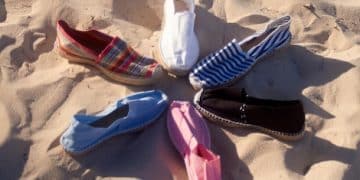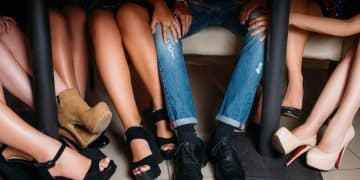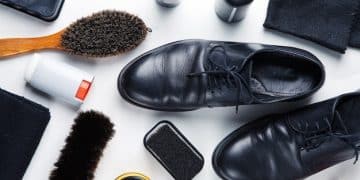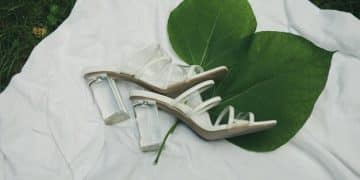Designer Shoe Sizing Secrets: Perfect Fit Every Time
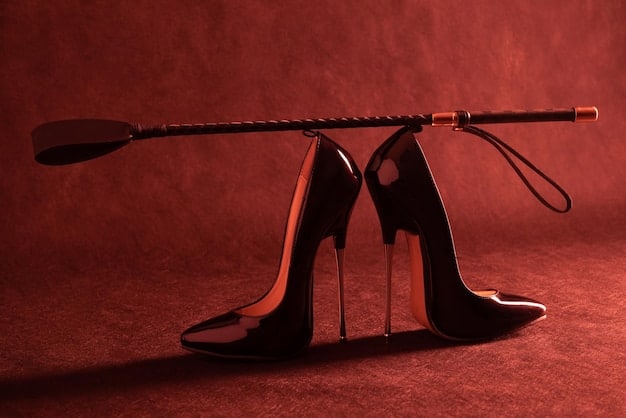
Achieving the perfect fit for designer shoes is crucial for comfort and longevity, often requiring a deep understanding of brand-specific sizing, material stretch, and personal foot anatomy to transcend standardized charts.
Stepping into the world of luxury footwear promises unparalleled style and craftsmanship, but it also introduces a unique challenge: achieving the perfect fit. Unlocking the Designer Shoe Sizing Secrets: Ensure the Perfect Fit Every Time is not just about comfort; it’s about preserving the integrity of your investment and experiencing true sartorial bliss.
The anatomy of a perfect fit: more than just numbers
Understanding shoe sizing, especially for designer footwear, goes far beyond the simple numerical figures you see stamped on the sole. It’s an intricate dance between your foot’s unique anatomy, the shoe’s design, and the specific brand’s interpretation of standard measurements. Many consumers, even seasoned luxury shoppers, find themselves bewildered by discrepancies between brands, leading to uncomfortable experiences and sometimes, costly mistakes.
The quest for the ideal fit begins by acknowledging that no two feet are exactly alike. Factors such as foot width, arch height, and even the natural swelling that occurs throughout the day can significantly impact comfort and sizing. Moreover, designer shoes often feature exotic materials and intricate constructions that behave differently from mass-produced footwear, adding another layer of complexity to the sizing puzzle.
Beyond the basics: foot characteristics and material impact
Your foot’s architecture plays a pivotal role in how a shoe fits. A high arch might require more instep room, while wider feet need sufficient toe box space to prevent pinching and discomfort. Understanding your own foot profile is the first step towards decoding designer shoe sizing. Many high-end brands, particularly those with a heritage in shoemaking, craft their lasts (the solid forms around which shoes are molded) with distinct characteristics, influencing the overall fit.
- Foot width: Often overlooked, width is as crucial as length. Some brands offer different width options (e.g., Narrow, Medium, Wide), but many do not, requiring careful consideration of the shoe’s natural width.
- Arch height: High arches can cause pressure points in shoes not designed to accommodate them, while flat arches might need more support.
- Toe shape: Your natural toe shape (e.g., pointed, round, square) should ideally align with the shoe’s toe box to avoid cramping.
- Material flexibility: Different leathers and fabrics stretch and mold differently over time, impacting the initial fit. Patent leather, for instance, tends to be less forgiving than soft calfskin.
The materials used in designer shoes are not merely aesthetic choices; they significantly influence how a shoe will wear and feel. Luxurious leathers, such as supple lambskin or patent leather, have varying degrees of elasticity and breathability. Understanding these material properties can inform your sizing decision, especially if you anticipate the shoe stretching or softening with wear.
For example, a shoe made from a very rigid, structured leather might feel tighter initially and offer less stretch over time, whereas a shoe made from a soft, unlined leather might stretch considerably after a few wears. This inherent characteristic of the material can mean the difference between a snug fit that eventually becomes perfect and a tight fit that never truly adapts to your foot.
When trying on designer shoes, pay close attention to how the material feels against your skin. Does it feel immediately comfortable, or is there a stiffness that suggests a break-in period? Be realistic about how much stretch you can expect, and factor this into your sizing choice, especially if you are between sizes. A slight initial tightness in a stretchier material might be acceptable, but extreme discomfort is a red flag.
Ultimately, the “anatomy of a perfect fit” extends beyond standard measurements. It encompasses a holistic understanding of your own feet, the unique characteristics of each shoe design, and the inherent properties of its materials. This nuanced approach is essential for anyone looking to truly master designer shoe sizing and ensure every pair fits like a glove.
Decoding brand-specific sizing charts: it’s not universal
Perhaps the most significant hurdle in buying designer shoes is the lack of universal sizing standards. A size 8 in one luxury brand can feel completely different from a size 8 in another, even if both are made in the same country. This phenomenon is a source of constant frustration for consumers, necessitating a methodical approach to navigating brand-specific sizing charts.
Each designer house often develops its own unique “last” – the three-dimensional model around which the shoe is constructed. These lasts dictate the shoe’s overall shape, volume, and how it will fit a foot. A brand known for its slender, elegant designs may have narrower lasts, while another, embracing more comfortable or classic styles, might feature generous ones. This inherent difference in last construction is a primary reason for sizing variations across brands.
The nuances of European, US, and UK conversions
Many designer shoes, particularly those from European luxury brands, use European sizing (EUR). Converting EUR sizes to US or UK sizes isn’t always straightforward, as conversion charts can vary slightly between retailers and brands. What one chart lists as a US 8, another might list as a US 7.5 or 8.5. This ambiguity underscores the importance of not solely relying on generic conversion tables but rather seeking out brand-specific guidance.
- European Sizing (EUR): Generally progresses in full or half sizes (e.g., 37, 37.5, 38). Tends to be more consistent within its own system than international conversions.
- US Sizing: Also primarily uses full and half sizes (e.g., 7, 7.5, 8). Women’s and men’s US sizing charts are distinct.
- UK Sizing: Typically uses full and half sizes, but often differs from US sizing (e.g., a US 8 might be a UK 6).
Adding to the complexity, some designers might use their own proprietary sizing scales, or their interpretation of standard scales might deviate from the norm. For instance, a brand might run “small” across its entire collection, meaning you consistently need to size up from your usual size, or “large,” requiring you to size down. These nuances are rarely communicated explicitly on generic size charts, making research vital.
Leveraging customer reviews and community forums can be an invaluable resource here. Other shoppers who have purchased from the same brand can offer insights into whether a particular style runs true to size, small, or large. Many luxury retailers also provide detailed product descriptions that might include notes on fit, such as “fits true to size” or “we recommend sizing up by half a size.”
Don’t hesitate to consult with sales associates, especially those specializing in designer footwear. Their expertise, gained from assisting countless customers, can provide specific advice on a brand’s sizing tendencies and how certain styles tend to fit different foot types. This personalized guidance can save you from purchasing ill-fitting shoes.
Mastering the at-home fitting process: tips for precision

While the allure of designer shoes often means online shopping, mastering the at-home fitting process is crucial for ensuring a perfect fit, minimizing returns, and maximizing comfort. This section will guide you through precise measurement techniques and practical considerations for trying on shoes in your own environment.
The first step is accurate foot measurement. Your foot size can change over time due to various factors like age, weight fluctuation, and even pregnancy. Therefore, it’s advisable to measure your feet periodically, especially before investing in high-end footwear. Always measure both feet, as it’s common for one foot to be slightly larger than the other. When trying on shoes, always prioritize the size that comfortably fits your larger foot.
Precise foot measurement techniques
- Time of day: Measure your feet at the end of the day when they are at their largest due to natural swelling.
- Measuring method: Stand on a piece of paper, trace the outline of your foot with a pen held perpendicular to the paper. Measure the length from the heel to the longest toe and the width at the widest part of your foot. Repeat for both feet.
- Consider socks: If you plan to wear socks with the shoes, wear them during measurement to account for their volume.
Once you have your measurements, compare them to the specific brand’s size chart. Many designer websites provide detailed charts that include both length and width measurements in centimeters or inches alongside their corresponding shoe sizes. If a brand offers widths, ensure your foot width aligns with the shoe’s dimensions.
Beyond measurements, the actual “try-on” is paramount. When the shoes arrive, try them on indoors on a carpeted surface to avoid scuffing the soles, which could void a return. Wear the type of socks or hosiery you intend to wear with the shoes. Walk around in them for a few minutes to assess the fit and feel.
Pay close attention to key areas: the toe box, the arch, and the heel. There should be about a thumb’s width of space between your longest toe and the end of the shoe. Your toes should not be cramped or touching the tip. The arch should feel supported, not suspended or overly pressed. The heel should feel secure but not experience excessive slipping or rubbing.
Consider the shoe’s material and construction during the try-on. Stiff leathers might need a break-in period, but they should never cause immediate pain. If a shoe feels uncomfortably tight from the onset, it’s usually a sign that it’s too small, even if the material is expected to stretch. Conversely, a shoe that feels too loose, especially in the heel or instep, can lead to blisters and foot instability.
Mastering the at-home fitting process is an art. It combines precise measurements with intuitive feeling and an understanding of how different shoe constructions and materials react to your feet. By dedicating time to this process, you increase your chances of securing a designer pair that not only looks exquisite but also provides lasting comfort.
Insights from industry experts: what stylists and shoemakers recommend
To truly unlock the secrets of designer shoe sizing, one must look beyond individual experiences and tap into the collective wisdom of those who live and breathe luxury footwear: stylists, bespoke shoemakers, and seasoned sales professionals. Their insights offer invaluable perspectives on fit, longevity, and making the right investment.
A common thread among experts is the emphasis on understanding the “last” of a shoe. As mentioned, the last provides the foundational shape, and different designers are known for specific lasts. For instance, a brand might have a reputation for narrow shoes, while another is celebrated for its generous width. Asking about the last or researching a brand’s typical last profile can shed light on whether a particular style is likely to suit your foot shape.
Expert recommendations for optimal fit
- Visit a reputable boutique: Whenever possible, try on designer shoes in person. Sales associates in specialty boutiques are often highly trained and possess deep knowledge of their brands’ sizing nuances. They can offer personalized advice and often have advanced measuring tools.
- Consider bespoke or MTO (Made-to-Order): For truly unique feet or a desire for ultimate comfort, explore bespoke shoemaking or made-to-order services offered by some luxury brands. While a significant investment, it guarantees a fit tailored precisely to your foot.
- Understand material stretch: Experts often advise not to “size down” hoping for stretch in all materials. While soft leathers can stretch up to a quarter or half size, patent leather or rigid synthetics offer minimal give. Account for this in your initial purchase.
- Walk around: Don’t just sit in the shoes. Walk around the store or your home for several minutes. Pay attention to any pressure points, slipping, or rubbing. A shoe might feel okay when static but uncomfortable when in motion.
- Listen to your feet, not just the numbers: Ultimately, personal comfort is paramount. If a shoe feels off, even if it’s your “usual” size, trust your intuition. Sizing is a guideline, not a strict rule.
Many stylists advocate for a gradual break-in period, especially for structured leather shoes. They suggest wearing new shoes for short periods initially, gradually increasing wear time to allow the material to mold to your foot naturally. This also helps identify any potential issues before they become severe.
Bespoke shoemakers, in particular, highlight the importance of foot symmetry and understanding your gait. While most mass-produced shoes cater to average feet, a bespoke shoe is crafted to accommodate individual asymmetries, ensuring balanced weight distribution and comfort. Even without going bespoke, understanding your gait (e.g., overpronation, supination) might influence your choice of style or the need for insoles, which in turn can affect shoe fit.
Another piece of advice often shared by professionals is to consider the shoe’s purpose. An evening heel worn for a few hours might tolerate a slightly snugger fit than a daily wear loafer or boot. Practicality should always factor into your sizing decision, especially for shoes you intend to wear frequently.
These insights from industry experts underscore that achieving the perfect fit in designer shoes is a nuanced process. It combines objective measurements with subjective comfort, an understanding of materials, and often, the guidance of knowledgeable professionals. By incorporating these recommendations, you can make more informed decisions and enjoy your luxury footwear to its fullest.
Common fitting mistakes and how to avoid them
Even with the best intentions, shoppers often fall prey to common fitting mistakes when purchasing designer shoes, leading to discomfort, damage to the shoes, and ultimately, buyer’s remorse. Recognizing these pitfalls is the first step toward flawless foot fashion. Avoiding them requires a disciplined approach and a commitment to prioritizing comfort over mere aesthetics.
One of the most frequent errors is buying shoes based solely on aesthetics, without properly assessing the fit. The allure of a beautiful design can often overshadow practical considerations, leading individuals to rationalize a less-than-perfect fit with the hope that the shoes will “break in.” While some natural give occurs, a shoe that is fundamentally too small or too narrow will likely never be truly comfortable.
Mistakes to sidestep for a perfect fit
- Ignoring your larger foot: Always size to your larger foot. Neglecting this can lead to discomfort and asymmetry in wear.
- Buying for “hope of stretch”: While some materials stretch, relying solely on this can lead to pain. A shoe should feel comfortable initially, with slight give expected, not significant transformation.
- Over-reliance on traditional sizing: Believing that your “usual” size will fit across all brands is a major error. Brand variations are common and must be accounted for.
- Not considering time of day: Feet swell throughout the day. Trying on shoes in the morning can lead to an ill-fitting purchase by evening.
- Focusing appointments on aesthetic feedback: While important, bring a trusted friend or stylist to provide honest feedback and help you resist buying something that just “looks good” but feels terrible.
Another common mistake is trying on shoes only while seated. When you stand, your feet lengthen and widen slightly as they bear your body weight. Walking further changes the foot’s dynamics. Always stand and walk in the shoes for a few minutes to fully assess how they feel under various pressures. This reveals potential pressure points or areas of slippage that might not be apparent when merely sitting.
Many consumers also make the mistake of not considering the context of wear. A shoe intended for occasional, short-duration wear (like a special event heel) can tolerate a slightly different fit than a shoe meant for extended wear (like a work pump or loafer). Purchasing a shoe that is only “tolerable” for a few hours but will be worn daily is a recipe for foot problems.
Furthermore, neglecting the appropriate hosiery is a significant oversight. If you plan to wear certain socks, tights, or even no hosiery, ensure you try on the shoes in that exact manner. The thickness of hosiery can significantly alter the fit, making a seemingly perfect shoe feel too tight or too loose.
Finally, not utilizing return policies efficiently is a common pitfall. With online shopping, it’s essential to try shoes on immediately upon arrival, on a clean, soft surface (like carpet), and keep all packaging. If there’s any doubt about the fit, initiate a return or exchange promptly. Hesitation can lead to missing return windows and being stuck with an ill-fitting and expensive pair of shoes.
By being mindful of these common mistakes—and actively working to avoid them—you significantly increase your chances of acquiring designer shoes that fit flawlessly, providing both style and enduring comfort for your feet.
Maintaining the perfect fit: care and stretching solutions
Acquiring the perfect-fitting designer shoe is an accomplishment, but maintaining that fit over time requires ongoing care and, occasionally, strategic intervention. Leather can stretch or shrink, and shoe components can wear out, impacting the initial comfort. Understanding how to care for your luxury footwear and when to employ professional stretching techniques is key to preserving its perfect fit and extending its lifespan.
Regular maintenance is foundational. Cleaning, conditioning, and appropriate storage protect the materials that contribute to a good fit. Leather, for instance, needs to be conditioned to prevent it from drying out and cracking, which can lead to a loss of suppleness and a tighter, less flexible feel. Proper storage, using shoe trees, helps maintain the shoe’s original shape, preventing creases and ensuring the material retains its intended form and size.
Care and stretching for lasting comfort
- Use shoe trees: Insert cedar shoe trees immediately after wearing. They absorb moisture and maintain the shoe’s shape, preventing creasing and helping the leather retain its optimal fit.
- Condition leather regularly: Use a specialized leather conditioner to keep the material supple and prevent it from drying out or shrinking, which can make shoes feel tighter.
- Protect from elements: Apply appropriate protective sprays or waxes, especially for suede or delicate leathers, to guard against moisture and stains that can alter the material’s integrity and fit.
- Professional stretching: If a shoe is slightly snug, consider professional shoe stretching. Experts use specialized tools and solutions to gently expand specific areas of the shoe without damaging the material.
- Avoid DIY stretching kits for designer shoes: While home stretching kits exist, they can be risky for expensive designer shoes. Improper use can lead to permanent damage or uneven stretching. Always consult a professional.
- Timely repairs: Address worn heels or soles promptly. Uneven wear can change your gait, causing pressure points within the shoe that affect fit over time.
For shoes that are slightly tight in certain areas, professional stretching can be a game-changer. A skilled cobbler can pinpoint pressure points and use specialized equipment to gently stretch the leather or fabric, accommodating your foot’s unique contours. This is particularly effective for width issues or mild tightness in the toe box. It’s crucial to go to a reputable cobbler experienced with high-end materials, as improper stretching can damage delicate leathers or structural components.
Conversely, sometimes shoes stretch too much, especially soft leathers or unlined styles. While full shrinkage is difficult, inserts and insoles can help. Gel inserts can fill volume and provide cushioning, while specialized insoles can offer arch support and reduce internal space, helping to achieve a snugger fit for slightly stretched shoes. For open-ended shoes like sandals or pumps where the foot slips, ball-of-foot cushions or heel grips can provide additional stability and comfort, effectively improving the perception of fit.
Maintaining the perfect fit is an ongoing commitment to the longevity and comfort of your designer footwear. By implementing proper care routines, using shoe trees, and knowing when to seek professional help for stretching or repairs, you ensure that your investment continues to provide unparalleled style and enduring comfort for years to come.
When to size up or down: understanding the nuances
The decision to size up or down in designer footwear is one of the most perplexing aspects of achieving the perfect fit. It’s rarely a universal rule, but rather a nuanced judgment based on brand specifics, material properties, shoe style, and individual foot characteristics. Understanding these subtleties can prevent uncomfortable purchases and ensure your investment delivers maximum satisfaction.
The general principle is to size up if a shoe feels uncomfortably tight, especially across the widest part of your foot or in the toe box, and particularly if the material is less likely to stretch significantly (e.g., patent leather, structured suede, certain synthetic blends). A tight shoe, even if aesthetically pleasing, will rarely become comfortable and can lead to blisters, bunions, and other foot ailments. If your toes are crammed or touching the end, you likely need a larger size.
Signs indicating sizing adjustments
- Sizing up indications:
- Toes are pressed against the front of the shoe.
- Lateral pressure on the sides of your foot feels constrictive.
- New shoes cause immediate pain or numbness.
- The specific brand is known to run small, based on reviews or expert advice.
- Sizing down indications:
- Excessive heel slippage, even with walk.
- Your foot slides forward, leaving too much space behind the heel.
- The shoe feels loose and unsupportive, even with inserts.
- The specific brand is known to run large.
Conversely, you might need to size down if a shoe feels excessively loose, allowing your foot to slide forward or causing significant heel slippage. While heel inserts can help with minor issues, a shoe that is too large can lead to instability, rubbing, and a generally ungraceful walk. This is especially true for slip-on styles like loafers, pumps, or mules where a snugger fit around the arch and instep is crucial for security.
Certain shoe styles also inherently influence sizing decisions. Pointed-toe heels, for example, often require sizing up by half a size to accommodate the foot’s length and avoid squishing the toes, even if the overall fit elsewhere seems correct. Boots, especially those designed for colder climates or with thicker lining, might also necessitate a half-size increase to allow for thicker socks or ample toe room.
On the other hand, open-toe sandals or mules might allow for a slight size-down if you are between sizes, as the lack of a closed toe box provides more flexibility. However, be cautious not to size down so much that your toes hang over the edge or your heel feels unstable.
Always consider the material of the shoe. Soft, unlined leathers (like nappa or lambskin) will stretch and mold significantly over time. If a shoe made of these materials feels very snug but not painful, it might be acceptable to stick with your true size, anticipating the natural give. However, very stiff leathers, patents, or synthetic materials offer minimal stretch, meaning the initial fit must be close to perfect.
Consulting customer reviews and product descriptions for specific styles is invaluable. Many online retailers include notes like “runs half a size small” or “designed for wider feet.” Paying attention to this collective wisdom greatly informs your sizing decision and helps you navigate the subtle variations between brands and styles.
| Key Point | Brief Description |
|---|---|
| 👣 Foot Anatomy | Understand your unique foot shape for optimal fit. |
| 📏 Brand Differences | Sizing varies widely between designer brands; research specific “lasts.” |
| ✍️ At-Home Precision | Measure feet precisely and assess fit by walking. |
| ✨ Expert Advice | Seek recommendations from stylists and cobblers for nuanced fit. |
Frequently Asked Questions
▼
Designer shoe sizes vary primarily due to different “lasts” (shoe molds) used by each brand, material properties, and distinct manufacturing traditions. Each designer house crafts shoes with a specific aesthetic and fit in mind, leading to inconsistencies when compared across brands, making careful research essential.
▼
If you’re between sizes, it’s generally safer to size up for closed-toe styles, especially if the shoe feels tight. However, for open-toe shoes or very soft leathers, you might be able to size down or stick with your usual size, as they often offer more flexibility. Always prioritize comfort and lack of pinching.
▼
To accurately measure your feet at home, stand on a piece of paper on a hard surface at the end of the day. Trace the outline of your longest foot, then measure the length from the heel to the longest toe and the width at the widest point. Compare these measurements to the brand’s specific size chart.
▼
Yes, a professional cobbler can often stretch designer shoes, particularly those made of leather or certain fabrics. They use specialized tools and solutions to gently expand specific areas, such as the width or toe box, without damaging the material. Always choose a reputable cobbler experienced with high-end footwear for best results.
▼
Shoe trees are wooden (preferably cedar) or plastic inserts placed into shoes when not in use. They are important because they help maintain the shoe’s original shape, prevent creases, absorb moisture from the lining, and allow the material to breathe and dry properly, thus preserving the fit and extending the shoe’s lifespan.
Conclusion
Navigating the complex world of designer shoe sizing doesn’t have to be a bewildering experience. By understanding the nuances of foot anatomy, recognizing brand-specific sizing variations, embracing precise at-home fitting techniques, and heeding the advice of industry experts, you can significantly enhance your chances of securing the perfect fit every time. This meticulous approach not only ensures comfort and avoids costly mistakes but also elevates your entire luxury footwear experience. With these insights, you’re well-equipped to make informed decisions, allowing each pair of designer shoes to fulfill its promise of unparalleled style and enduring comfort.
